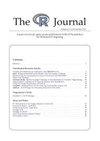R包imputeTestbench来比较单变量时间序列的Imputation方法
IF 1.1
4区 计算机科学
Q3 COMPUTER SCIENCE, INTERDISCIPLINARY APPLICATIONS
引用次数: 16
摘要
缺失观测值在时间序列数据中很常见,有几种方法可用于在分析之前推断这些值。单变量时间序列统计特征的变化会对缺失观测值的特征产生深远的影响,从而影响不同估算方法的准确性。对于用户提供的数据集,可以使用imputeTestbench包来比较与缺失数据的数量和类型相关的不同方法的预测精度。通过完全随机地或根据数据的特征以不同大小的块移除观测值来模拟缺失的数据。几种插值算法包含在包中,从简单的替换手段到更复杂的插值方法。测试平台不局限于默认函数,用户可以根据需要添加或删除方法。绘图函数还允许对不同算法的行为和有效性进行比较可视化。我们给出的示例应用程序演示了如何使用该包来理解受数据集特征和缺失数据性质影响的方法之间的预测准确性差异。本文章由计算机程序翻译,如有差异,请以英文原文为准。
R Package imputeTestbench to Compare Imputation Methods for Univariate Time Series
Missing observations are common in time series data and several methods are available to impute these values prior to analysis. Variation in statistical characteristics of univariate time series can have a profound effect on characteristics of missing observations and, therefore, the accuracy of different imputation methods. The imputeTestbench package can be used to compare the prediction accuracy of different methods as related to the amount and type of missing data for a user-supplied dataset. Missing data are simulated by removing observations completely at random or in blocks of different sizes depending on characteristics of the data. Several imputation algorithms are included with the package that vary from simple replacement with means to more complex interpolation methods. The testbench is not limited to the default functions and users can add or remove methods as needed. Plotting functions also allow comparative visualization of the behavior and effectiveness of different algorithms. We present example applications that demonstrate how the package can be used to understand differences in prediction accuracy between methods as affected by characteristics of a dataset and the nature of missing data.
求助全文
通过发布文献求助,成功后即可免费获取论文全文。
去求助
来源期刊

R Journal
COMPUTER SCIENCE, INTERDISCIPLINARY APPLICATIONS-STATISTICS & PROBABILITY
CiteScore
2.70
自引率
0.00%
发文量
40
审稿时长
>12 weeks
期刊介绍:
The R Journal is the open access, refereed journal of the R project for statistical computing. It features short to medium length articles covering topics that should be of interest to users or developers of R.
The R Journal intends to reach a wide audience and have a thorough review process. Papers are expected to be reasonably short, clearly written, not too technical, and of course focused on R. Authors of refereed articles should take care to:
- put their contribution in context, in particular discuss related R functions or packages;
- explain the motivation for their contribution;
- provide code examples that are reproducible.
 求助内容:
求助内容: 应助结果提醒方式:
应助结果提醒方式:


